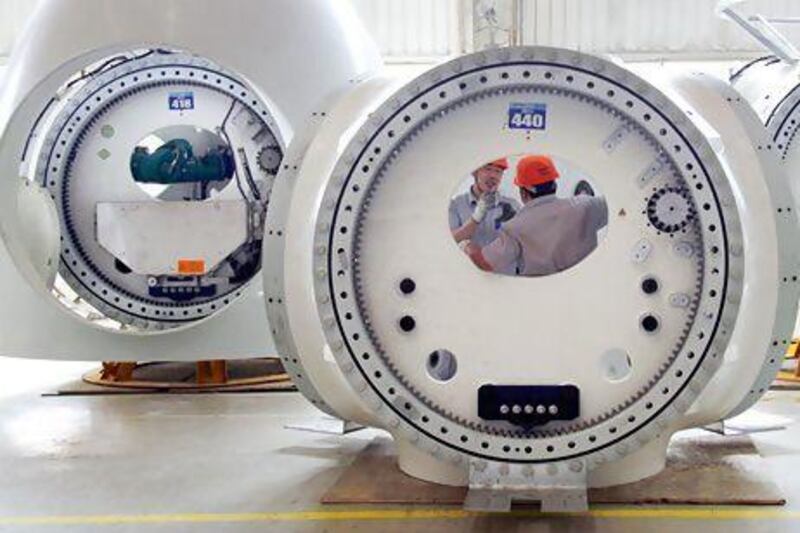It will not be plain sailing for the wind energy sector this year, as regulatory uncertainties and flagging state support undermine growth.
After many years of steadily increasing capacity, installation of wind turbines is predicted to slow, according to industry figures. Underperforming economies around the world have stunted government largesse, clouding the investment outlook and crushing margins.
"Turbine manufacturers are facing a considerable amount of pressure, because it really is becoming a cost-focused market," said Mirella Amalia Vitale, a vice president for global marketing at the Danish turbine company Vestas. In Europe, the sovereign debt crisis has played out badly for the renewables industry as a whole, with both solar and wind power suffering. As a result, several manufacturers have had to close factories and lay off workers.
In the United States, a tax credit scheme was extended in the last minute as politicians managed to avert the fiscal cliff of mandatory reduced spending and added taxes. Wind farm developers are rushing to get new projects off the ground before the one-year extension of the scheme expires, benefiting turbine vendors. But the late decision has depleted the projects pipeline, and new orders are likely to pick up only later in the year.
"It's fair to say that in our home markets, both in North America and in Europe, these are still times of uncertainty. Both because of regulatory uncertainty and continuing financial difficulties," said Adam Bruce, the global head of corporate affairs at Mainstream Renewable Power, a developer of wind farms.
Nevertheless, Mr Bruce believes in the long-term viability of the wind sector, with the "direction of travel" giving it a growing share of global electricity production. China, one of the strongest growth markets, has added to the pressure on manufacturers, as state support has enabled Chinese companies to beat them on price. As economic growth slowed, Beijing vacillated over capacity increase targets for this year, in the end upping initial ambitions of 15 gigawatts to 18GW.
"With this increase in the market, I think we will have a bright future," said Zhou Jianqing, the deputy general manager at Goldwind, one of China's largest turbine manufacturers.
China has put a lot of faith in wind power, and last year turbines generated more electricity in the country than nuclear.
Even cash-strapped Europe still holds growth potential, and the United Kingdom is about to embark on its third phase of capacity expansion.





